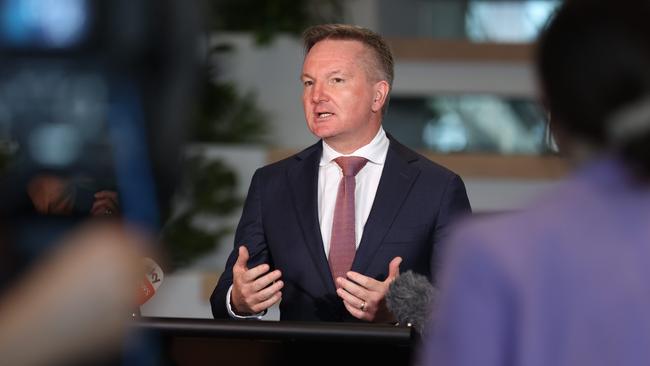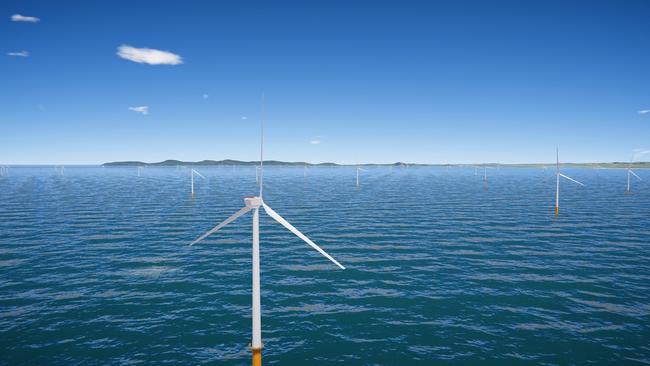Hunter region to be named Australia’s second offshore wind zone
The Hunter region will be declared Australia’s second offshore wind zone, a boost to the industry that will be critical if the country is to meet its renewable energy targets.
The Hunter region will be declared Australia’s second offshore wind zone, a boost to the industry that energy executives say will be critical if the country is to meet its renewable energy targets.
Federal Energy Minister Chris Bowen in February invited community feedback on permitted offshore wind in the Hunter region. The proposal received overwhelming local support, and The Australian understands Mr Bowen will formally declare applications to develop in the region open within a month.

Opening the Hunter to offshore wind is a boost to Australia’s hopes of dramatically reshaping its electricity generation mix. Australia expects to replace its fleet of coal power stations, the largest source of electricity in the country, in little more than a decade but is struggling to build enough renewable energy sources to compensate.
Offshore wind projects are often much larger than onshore wind or solar projects, offering far better compensation for the loss of coal-fired power stations that typically produce more than two gigawatts.
“The only way Australia meets its renewable energy targets is by developing offshore wind,” a senior energy executive told The Australian.
Australia has legislated a target of having renewable energy account for more than 80 per cent of its electricity generation by the end of the decade, a target that has put pressure on coal generators.

A second offshore wind region comes as states and territories place the zero emission source at the heart of plans to wean off fossil fuels. Victoria is Australia’s most aggressive state, placing offshore wind at the heart of its plan. In 2021, the southern state set a target of generating about 20 per cent of its energy needs from offshore wind within a decade.
The target then doubles to 4GW by 2035 and 9GW by 2040. In all, Victoria sees potential for 13GW of offshore wind capacity by 2050, five times the current renewable generation in Victoria.
The renewable goal has drawn many of the world’s largest developers and local heavyweights, all seeking to build offshore wind projects in Gippsland. But with only five licences expected to be approved, those of miss out are expected to turn their attention to NSW.
More than 20 developers have submitted applications for a so-called feasibility licence in Gippsland to the National Offshore Petroleum Titles Administrator, which will determine who can have an exclusive licence according to merit criteria. Requirements include experience in developing offshore wind projects and large capital reserves.

Feasibility licences give projects exclusive rights over a part of the region for seven years.
NOPTA earlier this year quietly told developers that it may take much of 2023 before a decision is announced, but pressure is growing on the regulator to expedite the process.
“I would expect a decision to approve Star of the South will be made by October.
“If they miss that deadline, first generation from offshore wind before the end of the decade will be difficult,” said one industry source.
Star of the South, Australia’s most advanced offshore wind project, is backed by Cbus and CIP and seen as likely to secure a licence.
Australia faces growing competition for critical wind equipment and local developers have warned that prolonged delays would see Canberra forced to back off growing order books.
US President Joe Biden has set a target of deploying 30 gigawatts of offshore wind by 2030, putting the zero-emissions energy source at the heart of his plan to fight global warming and decarbonise the electricity sector.






To join the conversation, please log in. Don't have an account? Register
Join the conversation, you are commenting as Logout